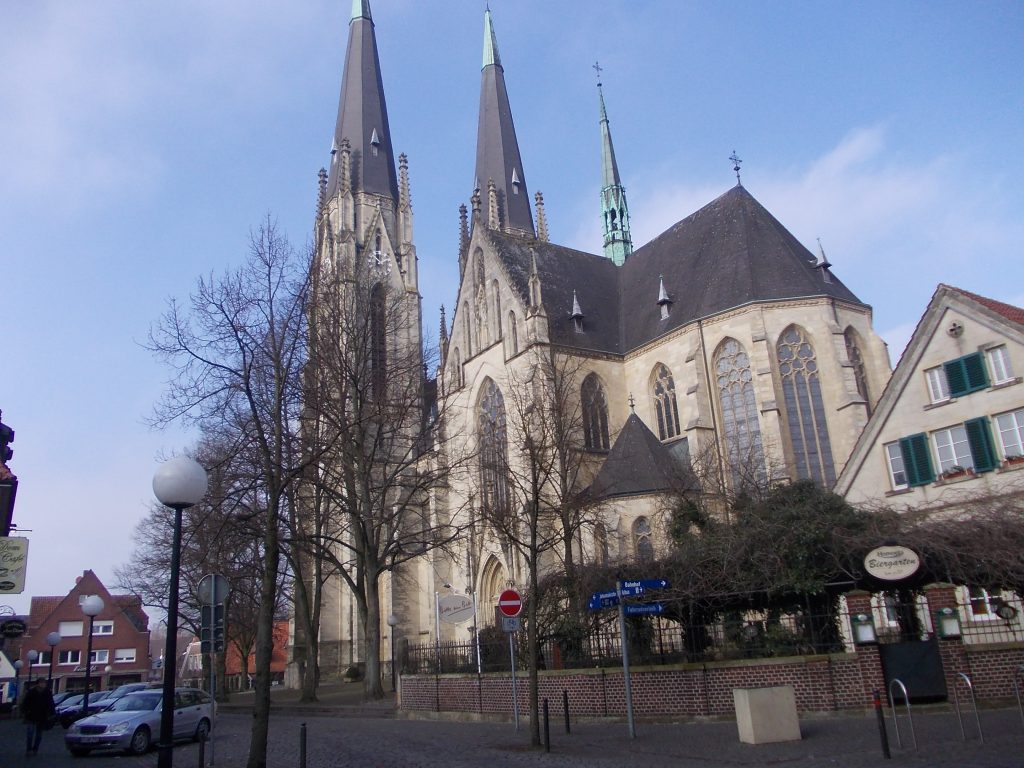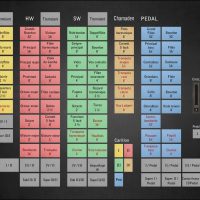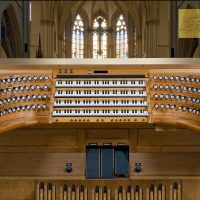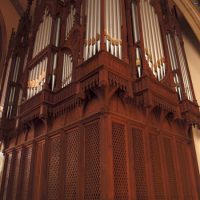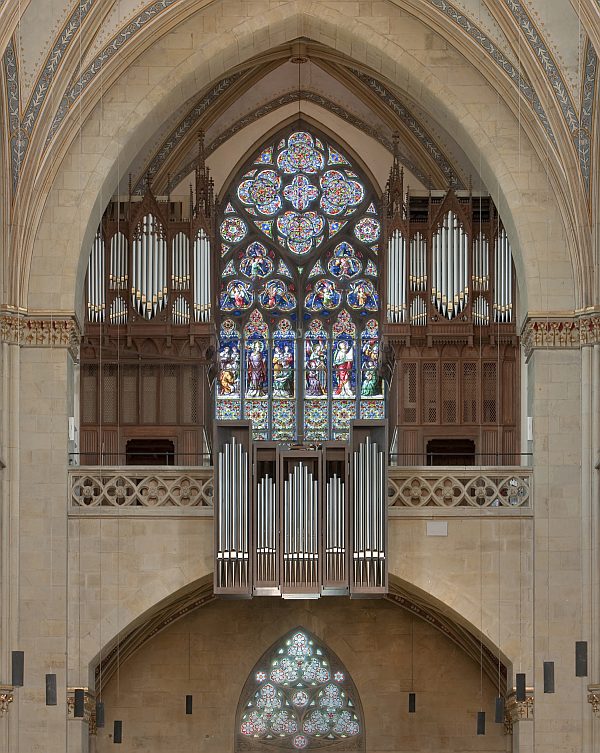
The St. Ludger Cathedral in Billerbeck (Germany) was built in 1892-1898. For lack of money, only a small organ with 32 stops was built by Friedrich Fleiter. The historic organ case is still preserved. In 1948, the organ was enlarged to 42 stops. In 2008, Orgelbau Fleiter started building a new organ, which was built in several stages and completed in 2014. The instrument has 72 speaking stops spread over four keyboards and pedal.
The organ is designed in the French symphonic style, with elements from other traditions, resulting in an eclectic universal organ. It has five divisions: four keyboards and pedal. The Hauptwerk and Chamadenwerk are located in the organ case on the right (north side). The Schwellwerk on the left (south side). The pedal is positioned behind both historic cases and features three 32′ stops, among others. The Rückpositiv is enclosed in a swell box and contains 12 stops of mixed (French and German) traditions. The Hauptwerk and Schwellwerk stops are inspired by the French style, developed by A. Cavaillé-Coll. The flutes of the Schwellwerk are overblowing. In addition to the chamade trumpets, the Chamadenwerk also offers solo stops, namely the Vox Ludgeri, a clarinet-like reed, and the Flûte harmonique.
Disposition:
| 1. Rückpositiv (expr.) C–c4 | 2. Hauptwerk C–c4 | 3. Schwellwerk (expr.) C–c4 | 4. Chamaden C–c4 | Pedal C–g1 |
| Principal 8’ | Grande Bourdon 32’ | Rohrbordun 16’ | Trompeta magna 16’ | Grand Flute 32’ |
| Rohrflöte 8’ | Violone 16’ | Doppelflöte 8’ | Trompeta real 8’ | Bourdon 32’ |
| Salizional 8’ | Principal 16’ | Geigenprincipal 8’ | Trompeta clarin 4’ | Principalbass 16’ |
| Unda Maris 8’ | Principal major 8’ | Bourdon 8’ | Cornet 5 f. | Flute 16’ |
| Praestant 4’ | Praestant 8’ | Viola 8’ | Flute harmonique 8’ | Contrabass 16’ |
| Holzflöte 4’ | Viola da Gamba 8’ | Vox coelestis 8’ | Vox Ludgeri 8’ | Soubasse 16’ |
| Waldflöte 2’ | Flute harmonique 8’ | Principal 4’ | Octavbass 8’ | |
| Quinte 1 1/3’ | Gedackt 8’ | Flute octaviante 4’ | Flute 8’ | |
| Mixtur 4 f. | Octave major 4’ | Fugara 4’ | Cello 8’ | |
| Sesquialtera 2 f. | Octave minor 4’ | Nazard harm. 2 2/3 | Bourdon 8’ | |
| Trompete 8’ | Flute conique 4’ | Octavin 2 | Choralbass 4’ | |
| Cromorne 8’ | Quinte 2 2/3’ | Tierce (harm.) 1 3/5 | Viola tenore 4’ | |
| Tremulant | Octave 2’ | Fourniture 5 f. | Contrebombarde 32’ | |
| Cornet 5 f. | Basson 16’ | Posaune 16’ | ||
| Mixture major 2’ | Trompete harm. 8’ | Fagott 16’ | ||
| Mixture minor 1’ | Hautbois 8’ | Trompettenbass 8’ | ||
| Bombarde 16’ | Voix humaine 8’ | Clairon 4’ | ||
| Trompete 8’ | Clairon 4’ | |||
| Tremulant | ||||
| Carillon | ||||
| Tremulant |
Couplers:
III/I, IV/I, Sub III/I, Super III/I
I/II, III/II, IV/II, Sub III/II, Super III/II
IV/III, Sub III/III, Super III/III, Aequallage ab (all supercouplers are sounding to the highest tone, i.e. “ausgebaut”)
I/Ped, II/Ped, III/Ped, IV/Ped, Super I/Ped, Super II/Ped. Cantus II/Ped 2′, Super III/Ped
System requirements: Hauptwerk advanced v.4.2. and higher
RAM consumption: 6-channel surround (Vol1 + Vol2)
16-bit, other settings default: 44 GB
20-bit, other settings default: 79 GB
24-bit, other settings default: 86 GB
